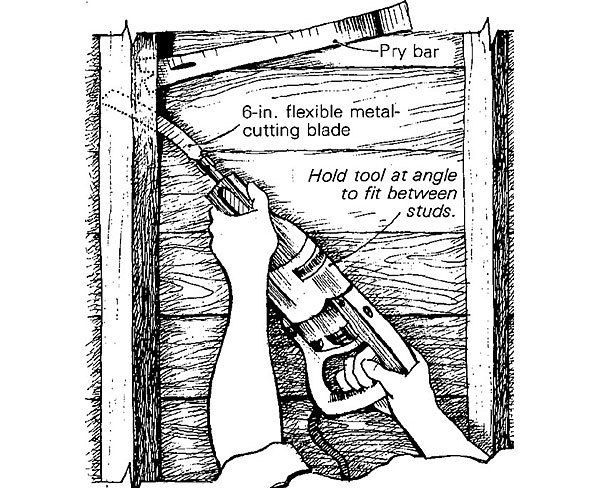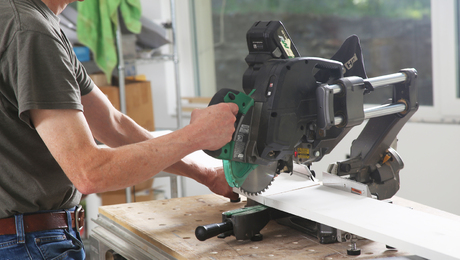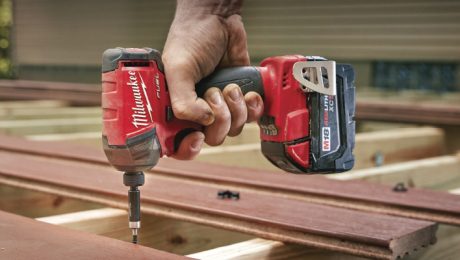
I recently expanded a portion of my house and needed to remove an existing exterior wall. I wanted to match the original siding, so I searched local lumber yards for the same pattern. I eventually found the proper sheathing and was staggered by the price. I realized I was about to remove close to $300 worth of perfectly good original siding from my house. The problem was how to baby it away from the old studs without rendering it useless. I tried prying, with little success; the brittle old boards cracked and splintered with such regularity that it became obvious another method was essential.
The solution was to cut the nails from the inside with a reciprocal saw mounting a metal-cutting blade. I have Milwaukee Electric Tool Company’s Sawzall (www.milwaukeetool.com), but any make will do. Remove the shoe from the tool so you can angle the blade nearly parallel to the siding. I used 6-in, blades, bent slightly to allow for the difficult angle. I found a little wedging with a pry bar made it easier to insert the blade between the siding and the studs. Be careful to keep the shaft of the saw away from the siding or studs. Contact can result in costly damage to the saw’s bearings, gears and the shaft itself.
Be sure to wear safety goggles, because the blade will occasionally snap during the work. I must have broken $10 worth, but I sure didn’t mind when I had my $300 worth of siding in usable condition. I figure it paid for the Sawzall, as well.
Editor’s note: Reciprocal saw manufacturers offer an offset blade adaptor that allows close-quarter sawing without removing the protective shoe.
—Hadley Green, Santa Monica, CA
Edited and illustrated by Charles Miller
From Fine Homebuilding #2






























View Comments
I'd like to Say Great Idea to Mr. Green and a BIG Thanks to the
Editor for the Note @ Offset Blade Adaptors! I "Reckon" I'll just Have to Get One! Thanks
I think a 12 inch blade might work better in some circumstances
Hadley, not Hedley, Edspa is right about the longer blade. Recently, I've been removing trim to install fire doors with 12" blades. I believe that the offset blade adaptor only comes in a kit from Grainger, for $61, others appear to be discontinued. https://www.grainger.com/category/reciprocating-saw-accessories/reciprocating-saws-and-accessories/saws-and-accessories/tools/ecatalog/N-165f
I had a house built by a contractor years ago who would send in a bunch of clowns to do the work, and then send his father-and-son master crew to fix what the clowns had screwed up. One day I was watching them fix a door frame that had been installed 1" out-of-plumb. They used a recip saw to cut the nails at the top of the king/jack studs and move them over plumb. I knew right then "I gotta get me one o' them recip saws!" Since then I've used that saw to build gate openers, cut out plumbing in a crawl space, scrape floor tile, you name it. Oh, and finesse framing apart by bumping a gap with a 4lb "persuader" and then cutting the nails. I now have the original corded saw, and my preferred 18v cordless. I had to replace the shoe on the corded saw but otherwise, it's still going strong.
Count my vote for the longer blade. It flexes quite readily to cut things that aren't aligned with the saw. I used that method just this week to cut out plywood floor up against a tub without cutting the subfloor beneath. It can be a little tough on the blade, but they're reasonably cheap and last plenty long even so.
Paul McKinley
A multi tool with metal cutting blade would also work, but it might be slower. Tool's angle would be perfect, I'd think.